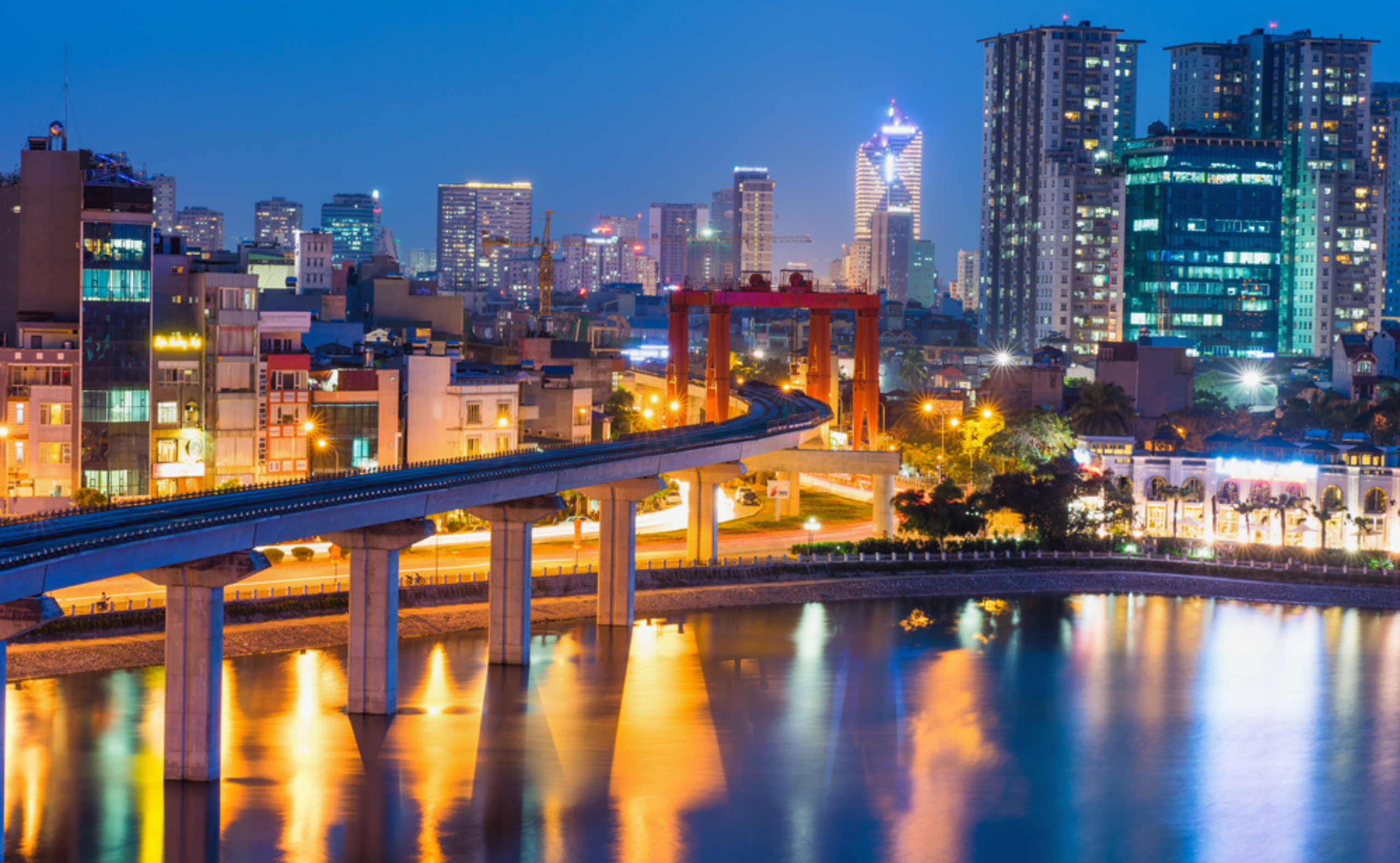
In an urban environment, resilience helps to maintain continuity amid shocks and stresses while progressing toward sustainability. When thinking about urban resilience in the post-pandemic era, the existing research is overwhelmingly focused on developed countries and less on developing countries. However, in the near future, most of the urban population will reside in developing countries, where they will converge in global megacities.
A new ADBI Press book explores the need for Asian cities to rethink urban resilience in response to the impact of the coronavirus disease (COVID-19) pandemic (Takahashi et al. 2023). The authors propose issues that should be addressed when examining future urban development in developing countries.
Asia is the most dynamic region for population change
Approximately 55% of the world’s population lives in urban areas, and this share is expected to increase to 68% by 2050. Meanwhile, Asia is now home to 54% of the world’s urban population, followed by 13% in Europe and 13% in Africa (United Nations 2018).
Looking at the ranking of megacities, seven of the top 10 megacities, including the top four (Tokyo, Delhi, Shanghai, and Dhaka), are located in Asia (GFSO 2023). While Tokyo is currently the most populous metropolitan area in the world, it has been the first to experience a population decline, with an expected fall of -1.3% from 2023 to 2030 (GFSO 2023).
Rethinking urban resilience
In Japan, urban resilience came into focus particularly after the Great East Japan Earthquake, when many measures were taken to address resilience to the disaster. However, the Great East Japan Earthquake exposed the vulnerability of urban hardware preparedness and led to much discussion of countermeasures. Resilience to the COVID-19 pandemic is not the same as the resilience that was discussed at the time of the Great East Japan Earthquake in Japan but rather resilience against long-term shocks that could end at any time. The spread of remote work on a large scale, for instance, led to questions about how people work and live, and how to enhance the resilience of individual citizens.
The concentration of population and industry in cities is the basis of urban socioeconomic development. Cities are important places for human society economically, culturally, and historically, but they can be vulnerable to unforeseen and unknown shocks.
The Organisation for Economic Co-operation and Development (OECD 2016) defines urban resilience as a city’s ability to absorb shocks, adapt to new circumstances, transform itself, and prepare for future shocks and stresses to ensure sustainable growth, well-being, and inclusive growth. It then identifies seven components of urban resilience: adaptive, robust, redundant, flexible, resourceful, inclusive, and integrated.
What are the arguments against urban resilience?
Based on the OECD’s definition of resilience, the book assesses ways to strengthen urban resilience in the post-COVID-19 world.
The authors acknowledge that when considering urban resilience, existing urban problems became more apparent with COVID-19. For example, for urban density and infection rates, the book suggests that density was not the only factor explaining the COVID-19 infection rate, but several factors were interrelated with density and affected the infection rate. These include accessibility to medical and sanitation infrastructure, physical distance, and the degree of infection prevention measures, such as hand washing. Tackling existing issues, such as a lack of affordable housing and economic and social disparities within cities, is therefore important not only for mitigating the negative impacts on societies but also for increasing urban resilience during a pandemic..
The book also details a number of specific lessons from the pandemic. First, when the number of urban facilities is limited, the governance capacity of the city strongly influences the flexibility of the urban system to maximize resource utilization efficiency. Significant differences in the abilities of cities within the same country to cope with COVID-19 were observed, underscoring the importance of urban governance.
Second, public urban facilities in both developing and developed countries, especially parks and green spaces that are freely open to residents, can have new roles as resourceful urban spaces.
Third, big data, such as social media and location-based information, has opened up tremendous possibilities for analyzing people’s behavior in cities in both developing and developed countries. These new insights will enable inclusive and integrated spatial analysis and analysis of people’s behavior, which have the power to enhance policy making and decision-making.
Another element specific to cities in developing countries is the existence of large informal settlements. The residents of these settlements are often vulnerable to infectious diseases due to sanitation issues. They are also weak in terms of income, as many of them work in small and medium industries that are vulnerable to economic shocks or have precarious employment. As future challenges, Asian cities with large numbers of informal settlements, in particular, need to ensure equity in health and sanitation in urban management, formalize informal settlements, and secure open spaces and green spaces.
Finally, the rapid acceleration of digitalization to secure physical distance from COVID-19 has had a fundamental impact on cities. The origin of the modern city can be traced back to the Industrial Revolution, when the population flowed into cities from rural areas in need of employment, creating the contemporary city structure of urban centers and suburbs. Before COVID-19, people flocked to cities for work and recreation, following the flow that constituted the modern city. However, through digitalization, work can be carried out remotely and entertainment can be enjoyed without being physically present, even from rural villages, and people can decide where they want to live and how they want to live. It is vital to consider this paradigm shift in people’s lifestyles when reflecting on the post-COVID-19 world.
References
German Federal Statistical Office (GFSO). 2023. The Largest Cities Worldwide 2023. GFSO.
Organisation for Economic Co-operation and Development (OECD). 2016. Resilient Cities. Paris: OECD.
Takahashi, K., S. Bharule, S. Kudo, and KE Seetha Ram, eds. Rethinking Cities for Resilience and Growth in the Post-COVID-19 World. Tokyo: Asian Development Bank Institute.
United Nations. 2018. World Urbanization Prospects 2018. United Nations.








Comments are closed.